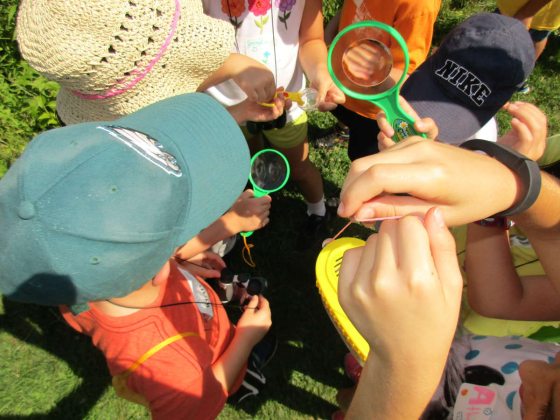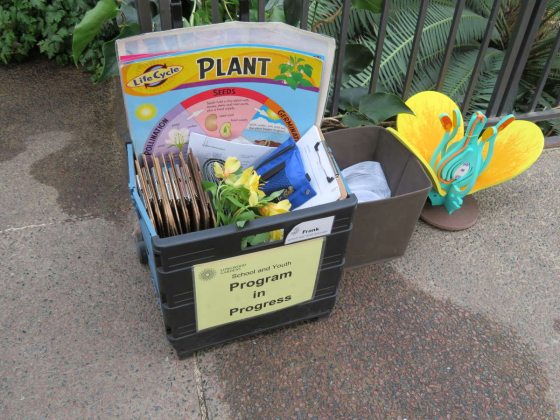Plenty of beauty can be seen and experienced here at Longwood … including the beauty of watching children develop an appreciation for (and excitement about) horticulture and the natural world. It’s our hope that one visit is enough to spark a child’s interest … to inspire that child to pay closer attention to plants and trees growing in his or her own surroundings … or even inspire that child to grow something of his or her very own. Even though we find ourselves in the winter months right now, it’s still a fantastic time (as is any time) to broaden children’s understanding of the natural world around them.
Studies by the Center for Disease Control and the American Academy of Pediatrics continue to find that connecting children to nature can improve their health and encourage a lifelong appreciation for the environment. Botanists and biology educators Elisabeth Schussler and James Wandersee have supported those findings, claiming that children with early plant experiences tend to become adults who care about plants and conservation … combating what Shussler and Wandersee have termed as “plant blindness” or the inability to see or notice the plants in one’s own environment.

Pierre S. du Pont, founder of Longwood Gardens, had the foresight to include education in Longwood’s mission statement. His dedication to knowledge laid the groundwork for the mission of our Education department’s School & Youth Division, which works to nurture children’s curiosity about the natural world. As part of those efforts, the School & Youth team engages more than 14,000 school-aged children in our Gardens each year, welcoming students from several neighboring states to participate in hands-on, curriculum-based activities during the school year. We use Longwood as a living classroom, weaving nature firsthand into the core subjects.

School & Youth Programs focus on such topics as the water cycle, plant parts and life cycle, pollination, mathematics, biomimicry, and environmental stewardship. Students might use measuring tapes to calculate the area of garden beds, dissect flowers, hunt for pollinators, explore biomes, use magnifying glasses to observe plant adaptations up-close, or climb up into our treehouses for a close look at our mature trees.

In doing so, students apply learned classroom material to these interactive activities, while being introduced to career opportunities that exist in the world of horticulture.

There is no better way to learn about plants than to plant a seed and watch it grow. During the winter months there are so many fun ways to bring plants indoors.
Seed collecting is a fun way to start. Common fruits like apples, oranges, or lemons have plenty of seeds to collect. Place these seeds on a paper towel to dry. Once dried, seeds can be placed in baggies. Be sure to label each baggie. Comparing the size, color, and shape of different seeds builds awareness. In the spring, try planting these seeds outdoors as an experiment.
Purchase a bag of dried lima beans at the grocery store. Place a lima bean on a damp paper towel. Put the paper towel and bean inside a baggie and set in a sunny location. Roots will begin to grow in a few days! Eventually it can be planted in soil to grow into a full-size plant. Caring for and growing a plant encourages responsibility.
Celery stalks can grow! Cut the celery stalks off the base. Place the base of the celery in a bowl with 2 inches of water. Keep in a sunny spot and be sure to refill the water as needed. In 7 to 10 days, the base will begin to grow new stalks! Understanding that plants provide us with food has never been so easy.
The goal of the School & Youth Programs is to have children see the Gardens as a magical place where they have an opportunity to nurture their curiosity and learn something about the natural world. In addition to participating in our School & Youth Programs, youth can learn more about plants and horticulture by participating in other Longwood programs spread throughout the year, including Scout programs and summer camps … among many other experiences and opportunities designed to get children engaged with nature.
Until then, happy growing!


